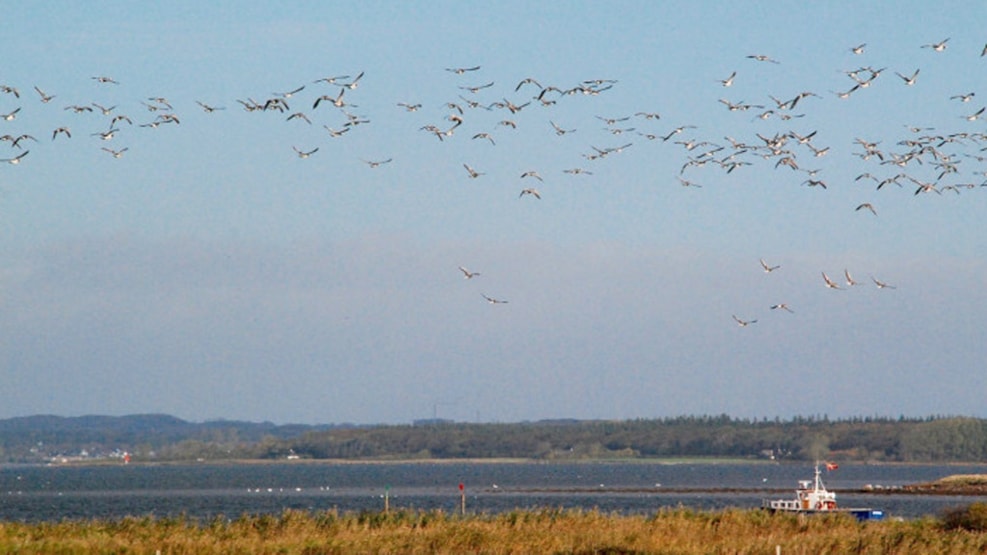
Hjortø
Hjortø is located in the shallow eastern part of the Archipelago Sea between Drejø and Tåsinge and is a low-lying reclaimed moraine island, which is one of Denmark's smallest inhabited islands.
The Island's Characteristics
You see water everywhere, as you are never more than a few hundred meters from the shoreline. The island covers an area of 0.90 km² and consists of a total of 13 residences, including five farms and eight houses. Hjortø is not just one of the islands with the fewest permanent residents in the Archipelago Sea but in the whole of Denmark. Five people live permanently on the island. The other houses, however, are inhabited for a large part of the year by vacation home owners. The island is car-free and there is no grocery store, inn, or other shops. For nature lovers, the island is therefore a truly unique experience.
The western tip of Hjortø is a bird sanctuary, and access is prohibited from March 1 to July 15. Outside of this period, it is a fantastic experience to venture out to the tip and settle down a stone's throw from the Høje Stene fairway, where the Ærø ferries and many yachts glide by. If you fancy a very special experience, you can wade over to the neighboring island of Hjelmshoved and take a walk on the beach, listen to bell frogs in June, or pick the beautiful Hindebæger flowers on the island. Note that the northern tip of Hjelmshoved is protected.
The flora on Hjortø includes something as rare as the many-flowered buttercup, and among the animal species, the rare bell frog can be mentioned, which has survived in the South Funen Archipelago due to the many ponds and the mild climate.
The Ice Age Landscape on Hjortø
The coastal landscape is dynamic and looks different today than when the flooding created the Archipelago and thus the islands. The sea breaks down the coast with great force, and the currents carry the loosened materials further, which are then deposited in calmer and shallower water, creating new land - marine foreland. The entire south coast of Hjortø consists of Holocene marine foreland, including a minor spit formation. To the northwest, there are formations of headlands with cut-off lagoons and small barrier islands.
Families on Hjortø
Residents of Hjortø, together with the Svendborg Museum, have created a unique family tree of the island's inhabitants over the past 400 years. In the beginning of the last century, the island flourished with around 50 residents, and there were investments in new construction. Some of the construction was also caused by a fire in 1917. As people moved away from the island, some of these "new" houses were taken over by vacation home owners. However, the family tree shows that descendants of the island's residents from the fifteenth century are still on Hjortø.